Dhalapathar: Discover The Unique & World Famous Handwoven Door Curtains
Location & Specialty
The village of Dhalapathar in Odisha is world famous for its hand-woven door curtains. That is locally known as “Dhalapathar Parda”. This handloom craft has received a Geographical Indications (GI) tag in the year 2012 for its unique weaving technique and distinctive temple-inspired designs. The Khordha district is home to Dhalapathar. It is a village in the Begunia tehsil of Khordha district in the Bolagarh block.
Origin & Antiquity
Dhalapathar door curtains and other fabrics are traditional textiles from Dhalapathar village in Odisha. This is handwoven by the Rangani community. The very word ” Rangani ” is a combination of two different words ( i.e.Ranga+Ani) which literally means one who has brought colours . Originating with door curtains (pardas) woven in 1936 ( the first known weaver of that time was Ganesh Pujari), the craft has expanded to include other items like sarees, lungis, and gamchas etc. These are known for their unique designs, natural colours and weaving technique without using dobby, jala, or jacquard machines.

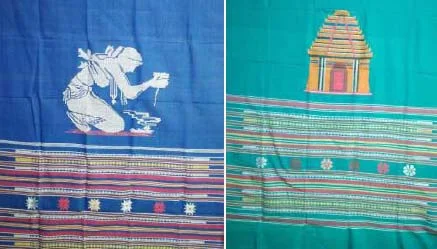
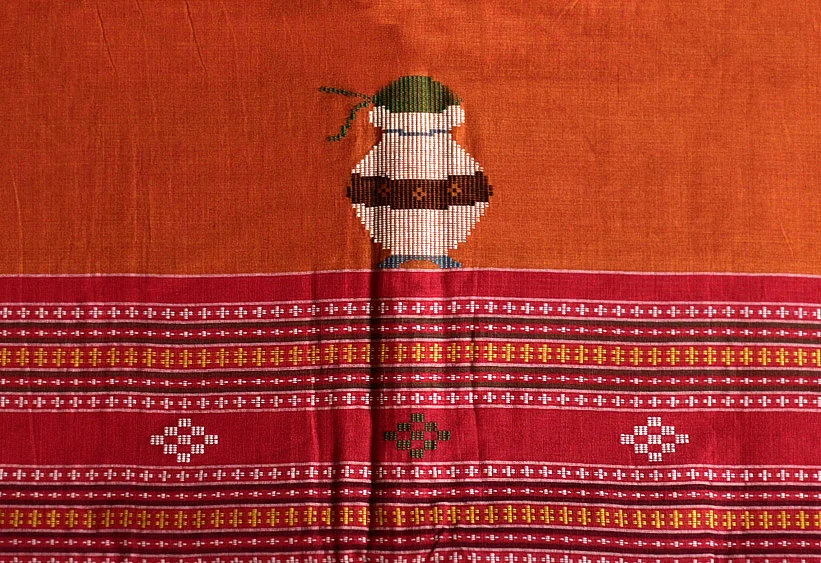
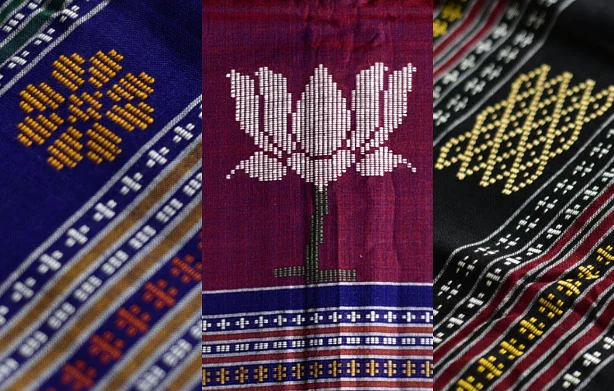
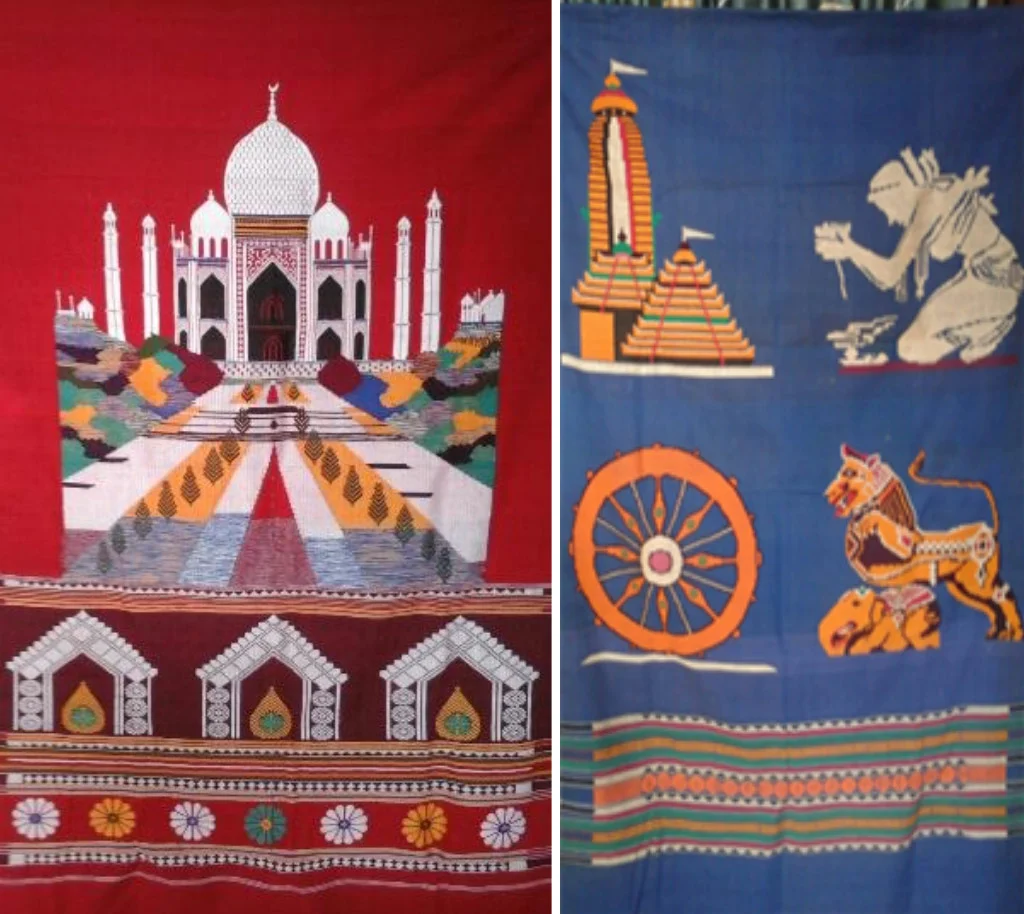
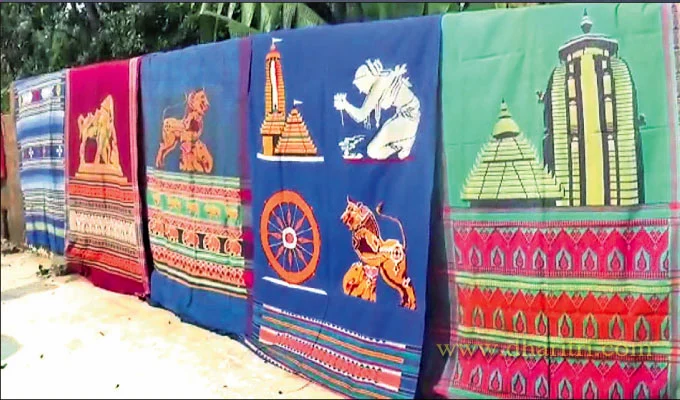
Design & Pattern
The design and patterns of the handwoven products of Dhalapathar ( particularly door curtains) are often intricate and include motifs such as: Temples of Odisha, Khandagiri and Udayagiri caves, Lion over elephant motif, Tiger with a hunter, Sunrise,Taj Mahal, Lord Buddha, Surya bandana, Ashok Chakra, Different Avatars ( incarnation) of Mahaprabhu Jagannath, Nabagunjara etc.
The Man Behind
If we go by the recorded history, we come to know about the local artisan “Udayanath Sahoo” who started weaving sarees with the above said designs during little early pre independence time . He later switched over to weaving door and window curtains as the demand for Dhalapathar sarees goes down. Then he started attending different exhibitions to popularise this local unique tradition of weaving pattern. In 1946, Udayanath Sahoo received an honor from Hawthorn Louis, the then British Governor of Orissa . Likewise, Shaurashtra Khadi Board and Benaras Khadi Board felicitated him in 1955 and 1956, respectively. Dhalapathar door curtains has found a place in the list of 50 exclusive and iconic heritage textile crafts of the country released by UNESCO.
Key facts about Dhalapathar’s hand-woven curtains:
- Unique Technique: The curtains are traditionally woven on a handloom using thick, hand-spun cotton yarns and a special extra-weft rib technique that does not require a jacquard or dobby. The artisans weave the intricate motifs entirely from memory.
- Iconic Designs: The designs for temples are particularly popular among weavers, who recreate cultural and religious motifs from memory. The Jagannath Temple and the Konark Sun Temple, two well-known Odia temples, are frequently featured.
- Handloom Heritage: The craft has been a significant part of Odisha’s handloom traditions for over a century. The weavers also produce other fabrics such as sarees, towels,wall hangings, and table covers etc.
- Preservation Efforts: Despite facing challenges from the rise of machine-made textiles, the Dhalapathar door and window curtains (Parda) has been identified by UNESCO as an exclusive heritage textile craft, and different organizations are working to help revive it.
Now the time has come,we have to extend all of our helping hand to revive the age old practice of our ancestor weaver artisans… and we can do so by purchasing some of our requirements ( however little it may be) from these present generation of weaving community of Dhalapathar . Do you agree???? Please give your suggestions in this regard.
Dr Manoj Mishra , lunarsecstasy@gmail.com
